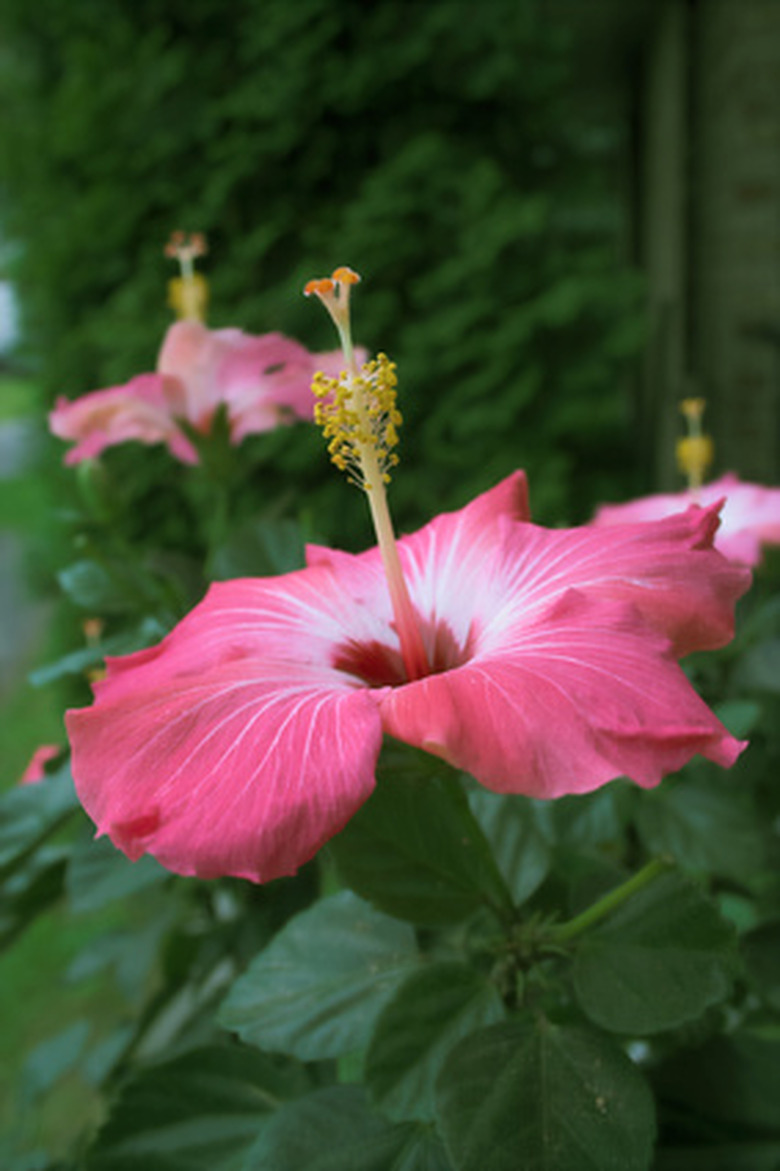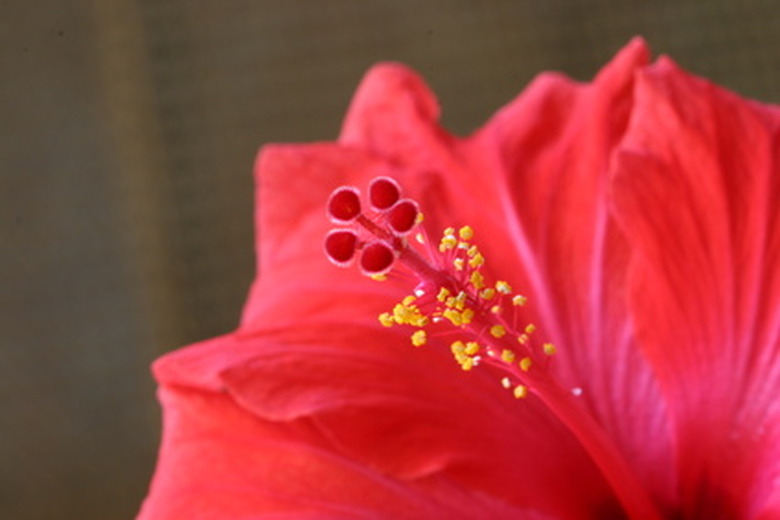How To Grow A Hibiscus Privacy Hedge
The hibiscus (Hibiscus rosa-sinensis L) is an evergreen tropical shrub that produces an abundance of year-round blossoms in a wide variety of colors. Hibiscus flowers are relatively short-lived, and most will only last on the shrub for a day. The plant is native to China, but was introduced to Florida through the South Pacific by way of Hawaii according to the University of Florida. The shrubs' ease-of-growth makes it an ideal privacy hedge that can easily attain a height of 15 feet. It can also be heavily pruned each spring to maintain the hedge's height and shape with no adverse affects to the plant.
Step 1
Apply a 15-5-15 fertilizer to the planting location one week prior to planting the hibiscus shrubs. Apply 1/2 pound per 100 square feet. Work into the soil and water thoroughly. Choose a sunny location.
- The hibiscus (Hibiscus rosa-sinensis L) is an evergreen tropical shrub that produces an abundance of year-round blossoms in a wide variety of colors.
- Apply a 15-5-15 fertilizer to the planting location one week prior to planting the hibiscus shrubs.
Step 2
Space each hibiscus shrub 4 feet apart for the ideal hedge. Dig the hole 1 foot wider then the hibiscus shrub's root ball. Plant at the same level as the shrub was planted at in the nursery. Tamp the soil down to remove any excess air pockets around the shrub's root system. Water the shrub thoroughly.
Step 3
Apply 2 to 3 inches of mulch such at peat moss, bark chips, leaf debris or sawdust around the hedge to keep weed growth at bay and maintain a moist soil environment. Keep the hibiscus moist once planted, but not water-logged.
- Space each hibiscus shrub 4 feet apart for the ideal hedge.
- Dig the hole 1 foot wider then the hibiscus shrub's root ball.
Step 4
Apply a 15-5-15 fertilizer once the shrubs begin to show growth. Apply 1/2 oz. per shrub. Sprinkle around the base and water thoroughly. Fertilize again in the mid-winter and then again in the spring.
Step 5
Prune the hedge in the early spring. Flowers grow on new growth, so it is best to prune in February or March, prior to the new growth's arrival.
- Apply a 15-5-15 fertilizer once the shrubs begin to show growth.
- Flowers grow on new growth, so it is best to prune in February or March, prior to the new growth's arrival.
Tip
When the hibiscus shrub is young, it may require staking to maintain an upright habit and provide protection from heavy wind. Insert stakes into the ground and lightly tie the hibiscus using nylon rope.
Warning
Hibiscus shrubs can be afflicted by aphids, spider mites, thrips and whiteflies. These pests can easily be controlled before extensive damage is done using contact or systemic pesticides recommended for the type of bug that is causing the infestation. There are also organic means to control the insects.
Things Needed
- 15-5-15 fertilizer
- Mulch
- Pruning shears
- Stakes
- Nylon rope

